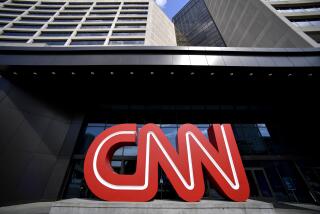Variety putting ‘pay wall’ to the test
- Share via
Struggling to adapt to the Internet, entertainment and media companies have gone back and forth over the issue of whether to charge for the material they make available online. News organizations have been particularly conflicted -- first they tried to collect fees on almost all their stories online, then they tried charging just for archived stories, then they made much or all of their work available for free in the hope of attracting advertisers to their websites. Now, some are talking about going back to the future, erecting “pay walls” that would force Web users to pay for much or all of the stories published online. News Corp. chieftain Rupert Murdoch has even pledged to make his newspapers’ stories invisible to Google’s search engine, making them harder to find in addition to raising their price.
One of the first to actually start charging (again) for content is Variety, a trade publication for Hollywood insiders. The jargon-rich tabloid spent the first half of the decade charging for online access to its stories, only to take its pay wall down in October 2006 in a bid to attract more casual readers. Now it’s changing strategies dramatically: Only those who pay Variety’s $248 annual subscription fee will be able to peruse the online version at will, even if they don’t want the print edition. Everyone else will be limited to five free articles per month. The company says it isn’t planning at this point to sell access to individual articles or provide other subscription options; its one price is good for all it offers.
Some pundits see the company as a guinea pig that’s testing pay walls for the rest of the news media. It’s sure to be closely watched, given the widespread disenchantment among publishers with the “free” model. Not only have online advertising revenues failed to offset losses in print ad sales, but publishers fear that subscribers are abandoning print editions for the free versions online.
Those are reasonable concerns, but Variety’s response to them may not provide much guidance for the media world. The few publications that have successfully charged for news online have typically been specialty outlets aimed at business niches, whose subscribers could write off the costs as a business expense. Because Variety’s goal is to hold onto the subscribers it already has, it has no qualms about driving casual readers off its site. The mere fact that it’s a trade publication, however, is no guarantee that Variety can make the pay wall work. As its readers migrate from print to digital, they’ll find a growing number of publishers offering free, ad-supported reporting on Hollywood. In short, even Variety has to compete with free. Its pay wall may keep nonsubscribers out, but it remains to be seen whether subscribers stay in.
More to Read
The biggest entertainment stories
Get our big stories about Hollywood, film, television, music, arts, culture and more right in your inbox as soon as they publish.
You may occasionally receive promotional content from the Los Angeles Times.










